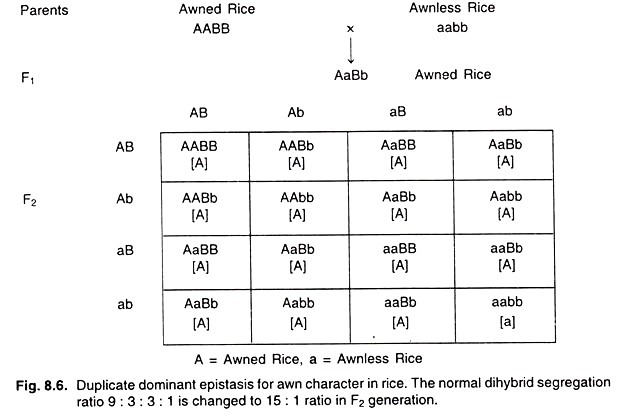ADVERTISEMENTS:
In this article we will discuss about the meaning and types of transduction of bacteria.
Meaning of Transduction:
The transfer of a small part of a bacterial genome from a donor to recipient bacterium through the agency of a bacteriophage is called transduction. It may be general or specialised. In generalized transduction almost any part of the donor’s chromosome may be transferred. But when it is specialised, as in the case of lambda prophage in strain K12 of E. coli, only specific loci (gal and bio genes) are transduced.
Zinder and Lederberg (1952) showed for the first time that in Salmonella typhimurium a bacteriophage of the type P22 could transfer a portion of the bacterial chromosome from one bacterial strain to another.
ADVERTISEMENTS:
The phages involved in transduction are all temperate, that is, those which either lyse the cell at once or remain in the host cell without killing it. They can multiply inside the bacterial cell and finally cause lysis of the host cell. A bacterium which harbours temperate phages is said to be lysogenic.
Types of Transduction:
i. Generalized Transduction:
Let us consider the transfer of a tryptophan synthesizing gene from a wild type donor to a mutant strain of E. coli lacking this gene. For transduction the donor bacterial strain is first injected with the suitable phage. Within a short time some cells lyse on their own. The remaining bacteria are killed by addition of chloroform.
The phage particles are separated from the bacterial cell remains by centrifugation and used to infect the recipient bacterial cells which are not able to synthesise tryptophan.
ADVERTISEMENTS:
After the phage is taken up by the mutant bacterial cells, the cells are spread on an agar medium which does not support the growth of the mutant strain. The transduced cells are able to grow on this medium due to the acquisition of the tryptophan synthesizing gene through the transducing phage.
Usually only one marker from the bacterial genome is carried by the phage particle. It is possible for two markers to be transduced at a time when the two are closely linked. The process is known as co-transduction and is utilised for mapping genes in the bacterial genome.
ii. Specialised Transduction:
This is exemplified by the temperate phage lambda (λ) which exists in a latent form in the E. coli strain K12. It is capable of transferring only gal (galactose synthesis) and bio genes (cluster of genes controlling synthesis of the vitamin biotin). It was discovered by Apple yard (later confirmed by Jacob and Wollman) that the lambda genome becomes integrated into the bacterial chromosome through the process of recombination.
It is excised from the bacterial chromosome along with gal and bio genes both of which lie on adjacent sites at its two attachment ends (Fig. 18.3). These bacterial genes will be sent into the next bacterial host resulting in specialized or restricted transduction of the gal and bio genes.
The temperate phage lambda (λ) attacks E. coli cells that are not lysogenic for lambda. After entering the host E. coli cell it may either become lytic and produce more than a hundred progeny phage particles which are released when the host cell becomes lysed. Or, alternatively, the single stranded open ends of lambda DNA can become ligated to produce a double-stranded ring (Fig. 18.3).
This closed ring becomes integrated into a special attachment site in the host cell chromosome by crossing over between the phage DNA and the bacterial chromosome.
In the integrated state the phage chromosome is called the prophage; it replicates along with the host cell chromosome and some of its genes are expressed. One of the prophage genes produces a repressor which inhibits its own excision from the chromosome and free multiplication, thus conferring immunity to lysis.
ADVERTISEMENTS:
The repressor also prevents super-infection from another phage. If the concentration of the repressor in the cytoplasm falls below a critical level, it leads to excision of the prophage and complete expression of the viral genome. Treatment with UV light and some drugs can also lead to excision of the lambda prophage from the host chromosome.
When the excised prophage leaves the host chromosome it carries with it the gal genes or the host cell attached on one side and the bio genes on the other. This lambda is said to be defective as it is not able to complete lytic development due to defect in its own genome. It is called λ dgal (defective λ prophage carrying gal genes) or λ dbio when it carries the bio genes of the host.
The defective lambda prophage then attacks a sensitive E. coli host and the λ dgal chromosome becomes integrated by reciprocal exchange between the gal regions of the prophage and host DNA (Fig. 18.3). The recipient bacterial cell thus becomes partially diploid for some genes that are transduced.

